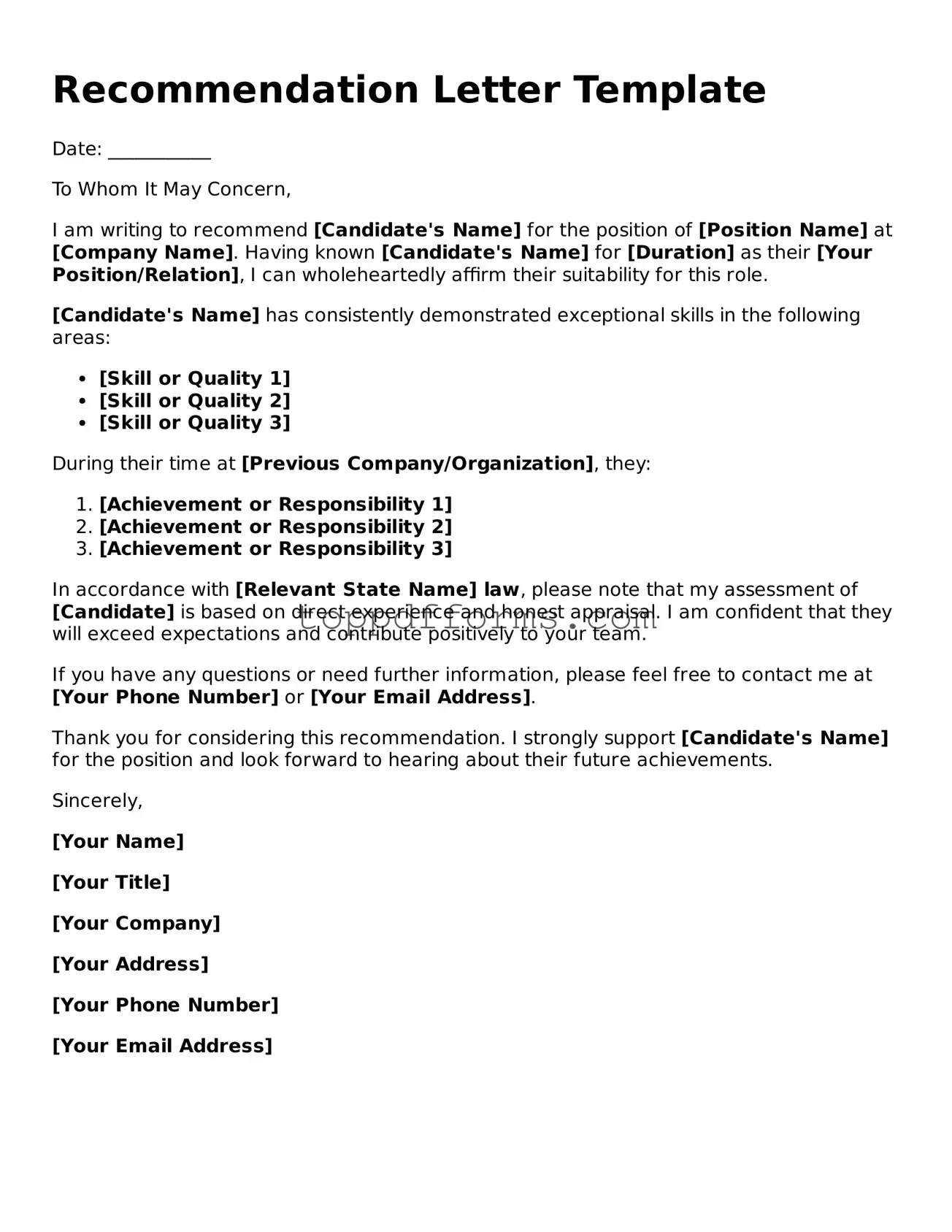What is the purpose of the Recommendation Letter form?
The Recommendation Letter form is designed to facilitate the process of obtaining endorsements from individuals who can speak to your qualifications, character, and experiences. These letters are often required for applications to educational institutions, job opportunities, or professional organizations. The form provides a structured way for recommenders to present their insights, ensuring that all relevant information is included.
Who should I ask to write a recommendation letter?
It is advisable to choose individuals who are familiar with your work ethic, skills, and achievements. Ideal recommenders include former employers, professors, or mentors who can provide specific examples of your abilities and contributions. Ensure that the person you ask is willing and able to write a thoughtful and positive letter on your behalf.
What information should I provide to my recommender?
When requesting a recommendation letter, it is important to provide your recommender with relevant details. This may include your resume, the purpose of the recommendation, deadlines, and any specific points you would like them to address. Offering context about the opportunity you are pursuing can help your recommender tailor their letter to better support your application.
How long should the recommendation letter be?
Typically, a recommendation letter should be one to two pages in length. This allows the recommender to provide a comprehensive overview of your qualifications without overwhelming the reader. The focus should be on quality rather than quantity; a concise, well-articulated letter is often more impactful than a longer, less focused one.
Can I see the recommendation letter before it is submitted?
It is generally considered polite to ask for permission to review the recommendation letter before it is submitted. However, many recommenders prefer to maintain confidentiality. Respect their decision if they choose not to share the letter with you. Trust in their judgment and their understanding of your strengths and experiences.
